6 reasons to use videos in ESL/EFL classroom
- Activities
- Tips & Strategies
- Methodology

13.03.2023
English teachers have the vital responsibility of assisting learners in effectively and engagingly developing their language skills. One tool that can be used to enhance the language learning experience is the use of artificial intelligence (AI). ChatGPT is a large language model developed by OpenAI that has gained its popularity among IT specialists, but it can also help English teachers in a variety of ways.
In this article, I am sharing my experience with ChatGPT exploring how it can be used to improve students' language skills and critical thinking. We will also look at the benefits and limitations of using AI in language teaching, and share practical tips for incorporating ChatGPT into your teaching.
Whether you're an experienced educator or a novice teacher, you will find everything you need to know to start using ChatGPT in your English classroom.
As a language teacher, you know that vocabulary is an essential component of language proficiency. Without a strong vocabulary, students will struggle to communicate effectively, comprehend what they read or hear, and express their ideas coherently. Therefore, it is crucial to develop their vocabulary knowledge and skills. Let's have a look at ways we can use ChatGPT to teach vocabulary.
For example, I have asked Chat GPT to generate a list of B2-level English words related to the topic of holidays with definitions. You can limit the number of words, but I did not do this. Here is what I got:
I thought it was not enough and asked ChatGPT to add some collocations:
| Book accommodation | to make a reservation or booking for a place to stay during your holiday. |
| Plan itinerary | to create a schedule or plan for your holiday, including activities and destinations to visit. |
| Hit the beach | to go to the beach for relaxation, sunbathing, and swimming. |
| Take an excursion | to go on a short trip or outing for pleasure or sightseeing. |
| Sample local cuisine | to try the traditional food and drink of the region or culture you are visiting. |
| Purchase travel insurance | to buy an insurance policy that provides coverage for unexpected events that can occur while traveling. |
| Go backpacking | to travel with a backpack and stay in budget accommodation while exploring different places. |
| Experience jet lag | to feel tired and disoriented after traveling across different time zones. |
| Arrange transportation | to organize how you will get from one place to another during your holiday, such as renting a car or booking a taxi. |
| Take a package holiday | to book a holiday that is organised by a travel company and includes accommodation, transportation, and often meals and activities. |
You can also input a word into ChatGPT, and it will provide you with a list of synonyms and antonyms, which will help your students learn new vocabulary and expand their word choice.
NOTE: I did not make any additional adjustments to the bot's answers provided in this blog so that each reader could evaluate not only the tasks performed by the bot but also their correctness.
As an English teacher, you know that words can have multiple meanings and can be used in different contexts, so simply memorising a list of words without understanding how they are used in context is confusing and ineffective. For example, the word "bank" can refer to a financial institution, the side of a river, or the action of tilting to one side. Without context, it may be difficult for a learner to understand which meaning is intended in a particular sentence.
Become the best online teacher
When we encounter new words in context, we can see how they are used, and we can infer the meaning from the surrounding words and sentences. This makes the learning process more meaningful and memorable, as the words are associated with real-life situations and experiences.
Teachers can use ChatGPT to provide contextual examples of vocabulary.
Option 1: Simply put in a word into ChatGPT, and it will provide you with a list of sentences that contain the word, helping your students to understand how the word is used in context. For example, I asked it to [provide context sentences for the word "itinerary"]. Here is what I got:
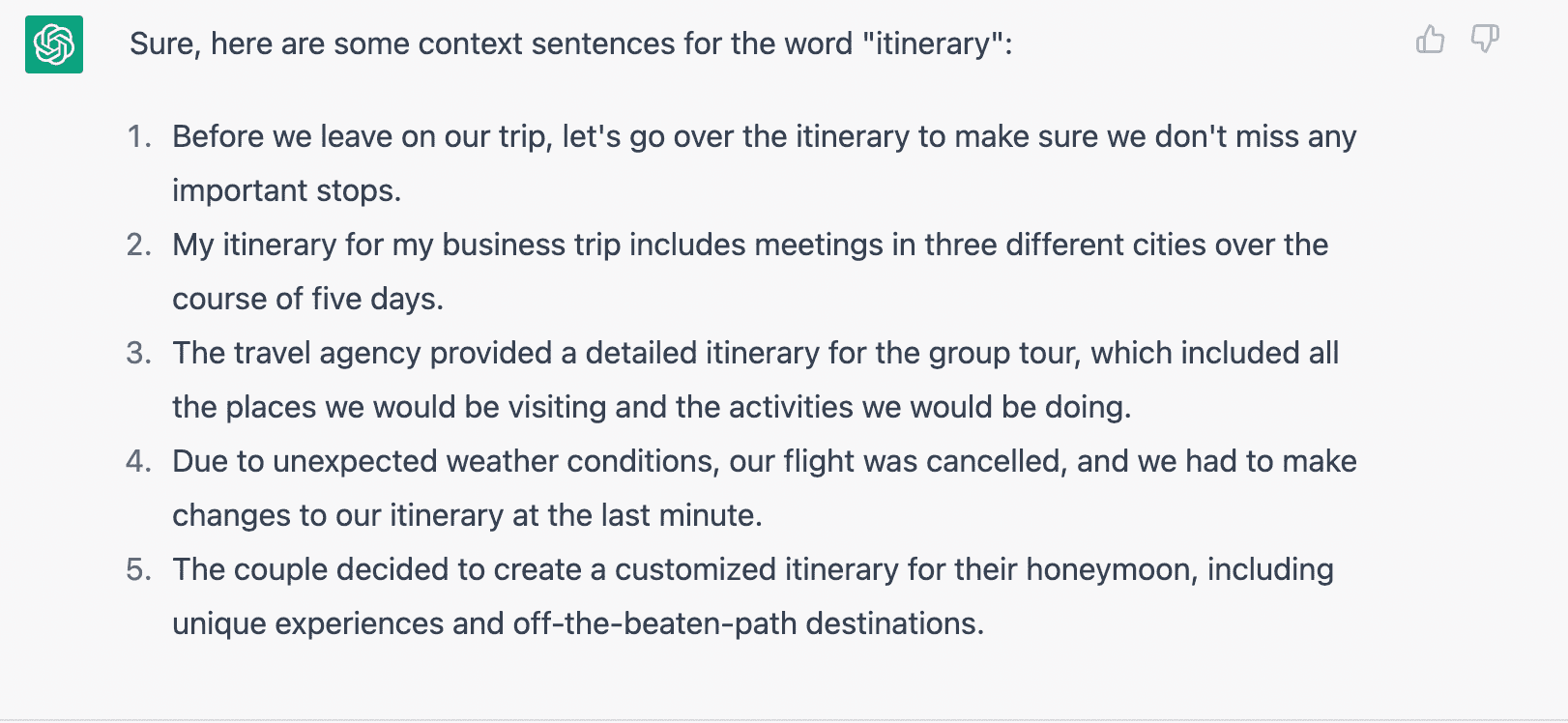
Option 2: More specific. Ask ChatGPT to [create a story for B2 students to set a context for the following vocabulary: arrange transportation, itinerary, travel insurance, jet lag, local cuisine, destination, sunburn, hit the beach, resort, sightseeing, backpacking:
Here is what I got:
Emily had been meticulously planning her long-awaited dream vacation for months. She yearned to experience the vibrant local cuisine and immerse herself in the rich cultural tapestry of Southeast Asia. She ardently decided to go backpacking, donning her sturdy backpack and mapping out an ambitious itinerary of the cities she desired to visit, culminating in her ultimate destination — a tranquil beach resort on a pristine tropical island.
Before setting out, Emily fastidiously arranged transportation from the airport to her first destination. She also wisely purchased comprehensive travel insurance to safeguard against any unforeseen mishaps.
After a grueling long-haul flight, Emily arrived at her initial destination, breathless with anticipation. She spent the first few days energetically sightseeing, marvelling at the vibrant hues of the bustling markets, and savouring the mouth-watering local cuisine. However, she soon realized that she was starting to experience severe jet lag. Her internal clock was thrown off-kilter, and she struggled to stay awake during the day.
Despite her flagging energy levels, Emily was positively ecstatic to finally hit the beach at the resort. She ecstatically immersed herself in the sparkling ocean waters, relishing the sensuous caress of the sun on her skin. However, she forgot to reapply sunscreen and ended up with a painful, fiery-red sunburn.
The next day, Emily decided to embark on an adventurous sightseeing excursion to explore the exquisite island. She roamed through the bustling local market, entranced by the vivid colors of the exotic fruits and scents of the fragrant spices. She also met some other intrepid backpackers, exchanging thrilling travel tales with them.
After a few days on the island, Emily felt completely rejuvenated and excited to resume her thrilling backpacking journey. She carefully packed her sturdy backpack, bidding a fond farewell to the tranquil beach resort, and eagerly boarded a bus to her next enchanting destination, eager for the next exhilarating chapter of her thrilling travel adventure.
As you can see the story is quite interesting and GPT has used all the vocabulary I asked for. However, this is not the original answer.
Can you guess what I asked it to do after I got the first answer?
Option 3: Ask ChatGPT to create a conversation/dialogue between two speakers of English on the topic of holidays. You can specify which vocabulary to use or leave it to the bot. I used the same set of words.
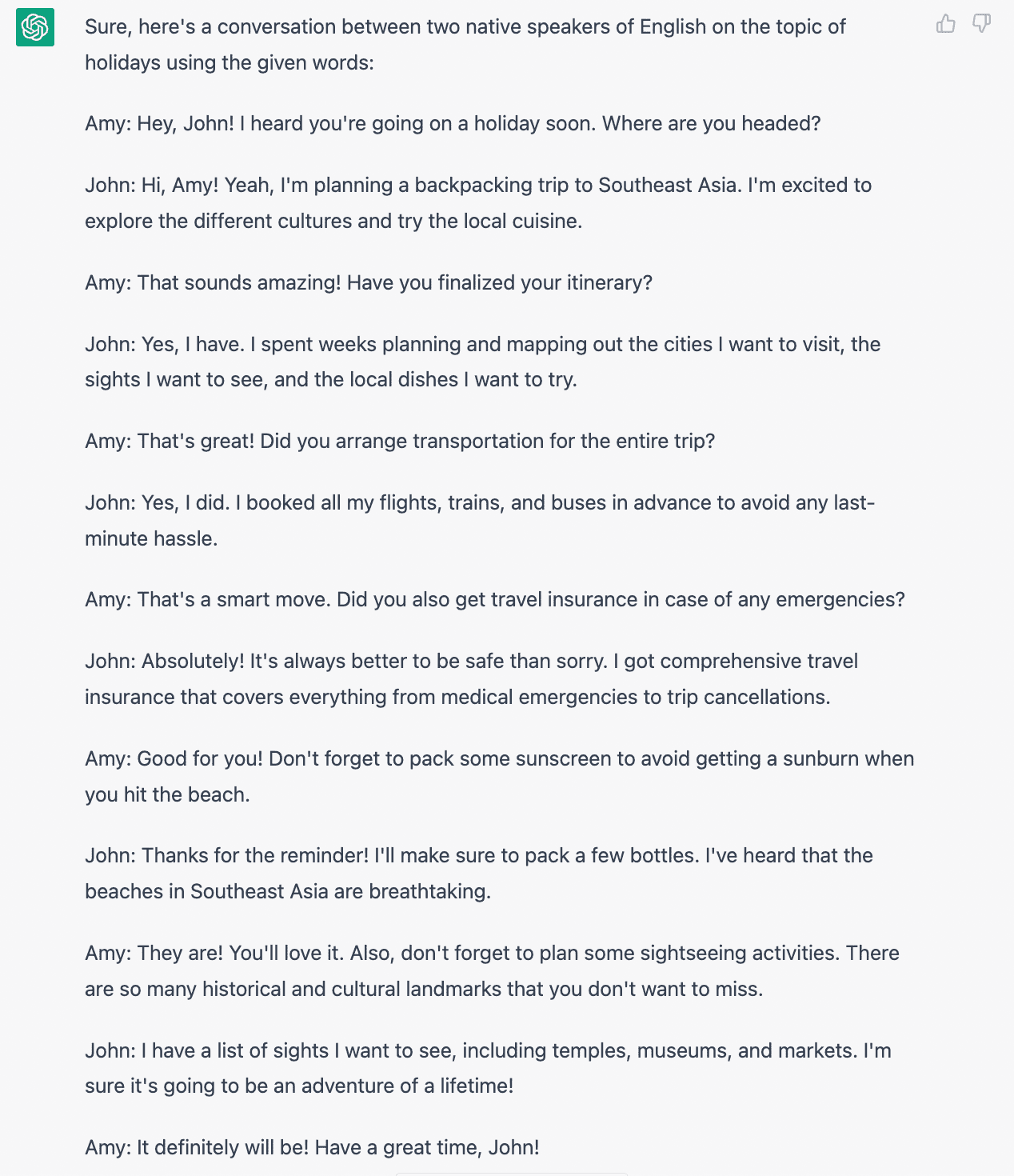
Contextualising vocabulary also helps learners develop their communication skills, as they learn how to use target language appropriately in different situations. They will better understand the subtle nuances of the language, such as idiomatic expressions and cultural references, which can improve their overall proficiency in the language.
NOTE: Use sentences or paragraphs containing the target language and have your students identify the words and their meanings.
ChatGPT is a perfect tool for creating controlled practice activities, i.e. language practice in which learners perform structured and controlled activities to reinforce their understanding and use of specific vocabulary and grammar structures. It is called "controlled" because learners are often given a limited set of options or structures to work with and are guided closely by the teacher or materials.
Controlled practice activities can include a wide variety of tasks, but some common types include.
Look through the gallery below to see what Chat GPT has generated:
You can combine ChatGPT and other apps to create vocabulary quizzes.
Quizlet is well-known for its flashcard feature, which can be a powerful tool for memorising vocabulary. You can use ChatGPT to generate flashcards based on a specific topic or theme, and then import those into Quizlet. This can be a great way to create custom flashcards that are tailored to your learners' needs.
You can also ask ChatGPT to generate questions and answers for Kahoot quizzes based on a specific topic. These questions can include vocabulary words and definitions, as well as related concepts and examples. Use the Kahoot quiz to engage your learners in a fun and interactive way, while also reinforcing their understanding of the vocabulary and concepts you are teaching.
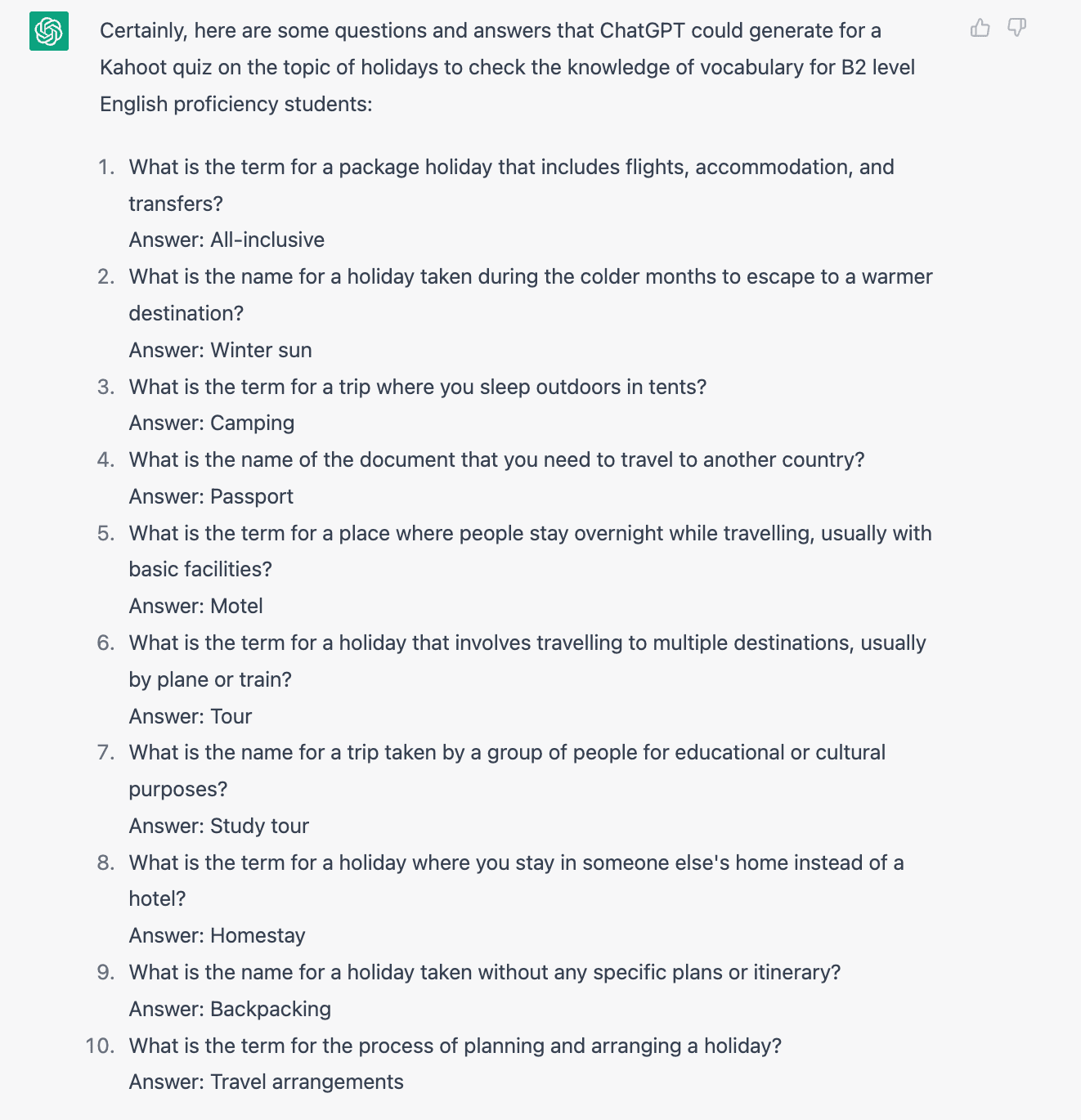
To create more personalised and interactive vocabulary activities that will help your students learn and retain new words more effectively, use ChatGPT and Wordwall.
To start, generate a list of vocabulary you need using ChatGPT, along with their definitions, synonyms, and antonyms.
Then, create a Wordwall activity that incorporates these words and their meanings, such as a matching game, crossword puzzle, or word search. Or you can generate context sentences and texts to create cloze activities where students have to drag and drop words into blank spaces.
The platform offers a variety of customisable templates for activities such as quizzes, word searches, matching games, crossword puzzles, and more. Just upload your content and use Wordwall's tools to create engaging and interactive learning experiences for your students.
NOTE: ChatGPT is perfect for generating the content, and it saves a lot of time. And even if you don't know how to use these apps, you can always ask ChatGPT ;)
Just like with vocabulary, it's important to make it relevant to students' lives by giving real-life examples. And guess what? ChatGPT can help with that!
Explain
It's important to contextualise grammar (and vocabulary) by providing real-life examples and situations that students can relate to. You already know how to create those with ChatGPT.
Not only sentences, stories, or dialogues, but it can also explain grammar rules in a more creative ways. For example, in poems:

and jokes:

Focus on meaning
It's important to teach grammar in a way that focuses on meaning rather than just form. Students need to understand why a particular grammatical structure is used and what it conveys in terms of meaning. This is where concept-checking questions or CCQs help.
They are usually used after introducing a new language concept or structure to ensure that learners have understood it correctly. CCQs are particularly useful for checking comprehension in a more interactive and engaging way than simply asking students to repeat information or memorise rules. And you can use ChatGPT for creating CCQs.
For example:

ChatGPT can be a valuable tool for teachers to help students improve their writing skills.
ChatGPT can generate writing prompts that can be used to inspire students to write creatively or analytically. You can ask students to write a story, an essay, a letter, or a report based on the prompt provided by ChatGPT. Simply input a few keywords related to the topic you want to cover, and GPT will generate a list of prompts for you to choose from. This can be a fun and engaging way to get students excited about writing.
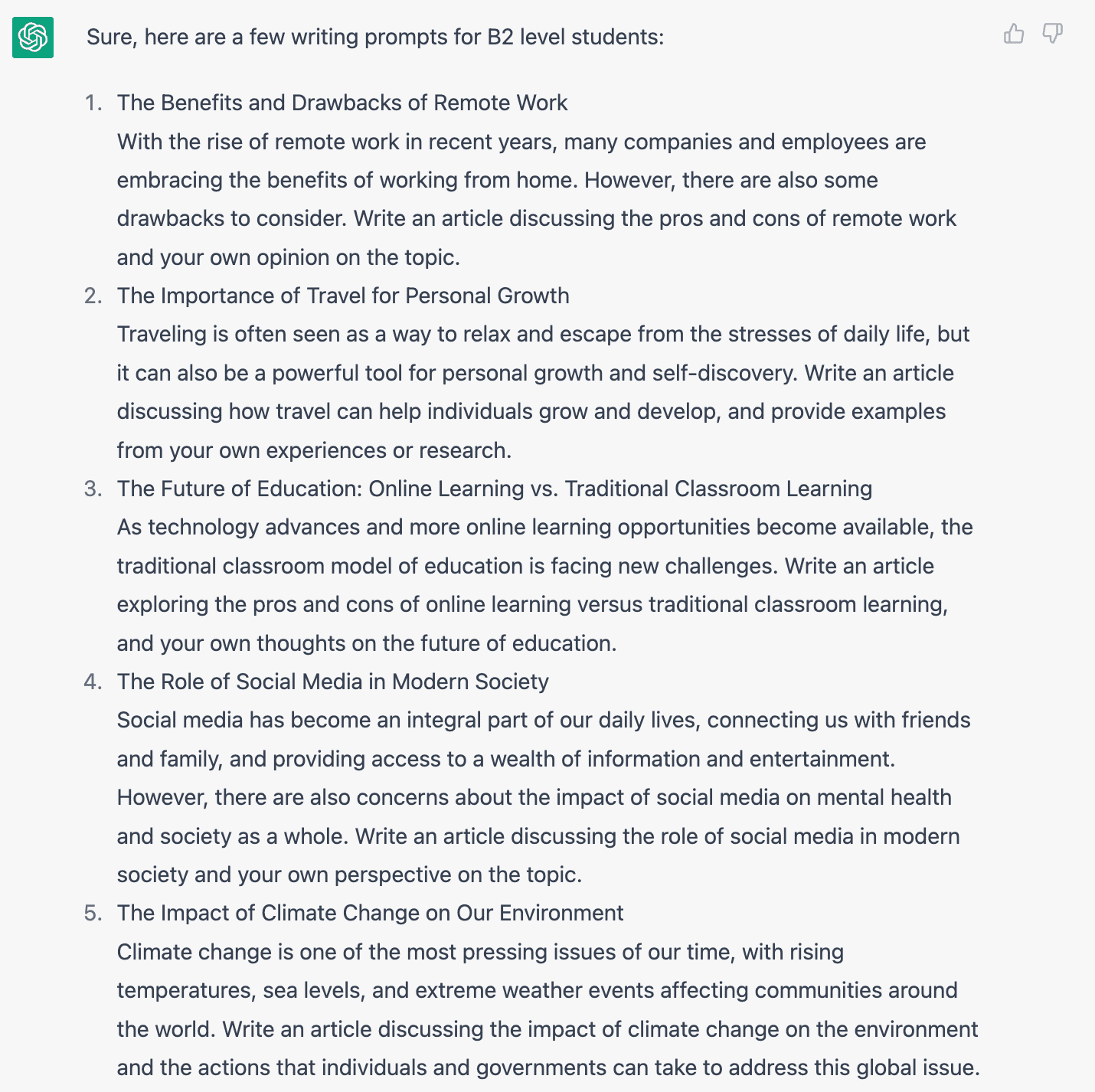
I have also asked the bot to create a sample answer to one of the prompts.
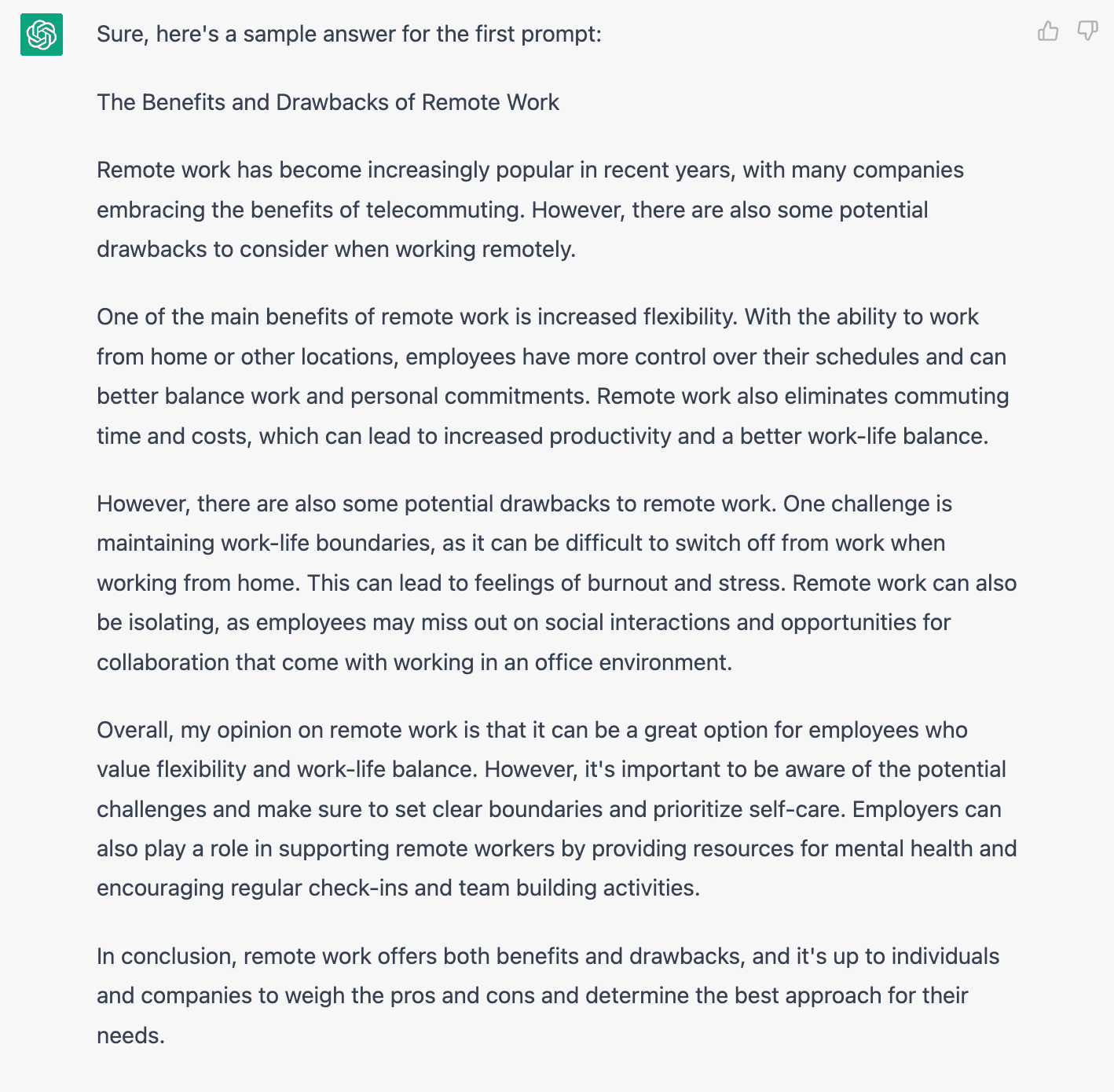
Start by selecting a well-written text that aligns with the topic or skill you want to teach. You can find examples of good writing in textbooks, online publications, or other resources. After students read the original text ask them to compare it to the text generated by GPT, looking for similarities and differences in language usage, sentence structure, or tone.
Use these observations to discuss with the class what makes the original article or essay a good piece of writing, including the author's purpose, audience, and the language and structures used to convey ideas.
Then, have students use the original piece as a model for their own writing by providing them with a similar writing prompt or assignment. Finally, provide feedback and support to help students improve their writing, encouraging them to revise their work based on the model provided and to continue practising until they can produce similarly high-quality writing on their own.
You can now compare the original article with the one created by ChatGPT:
Learning a new language involves more than just speaking and writing. It's equally important to develop listening and reading skills as they lay the foundation for strong communication skills. With ChatGPT, you can make the process of learning more engaging and fun. And save your precious time.
Option 1: You can input reading or listening texts into ChatGPT and have it generate comprehension questions for your students to answer. This can help them practise identifying key ideas, details, and themes in the text.
Option 2: Or you can simply ask ChatGPT to generate a text with comprehension questions. For example, I asked the bot to write a 400-word article about the life of the singer, Billie Eilish for my B1-level teenage students of English. Also, the task was to write 7-8 comprehension questions with answers and tell interesting facts about the singer. Look through the gallery below and see what I've got:
You can enter a text into ChatGPT and have it generate discussion prompts based on the content of the text. This can help students practise their speaking and listening skills and engage in critical thinking about the text.
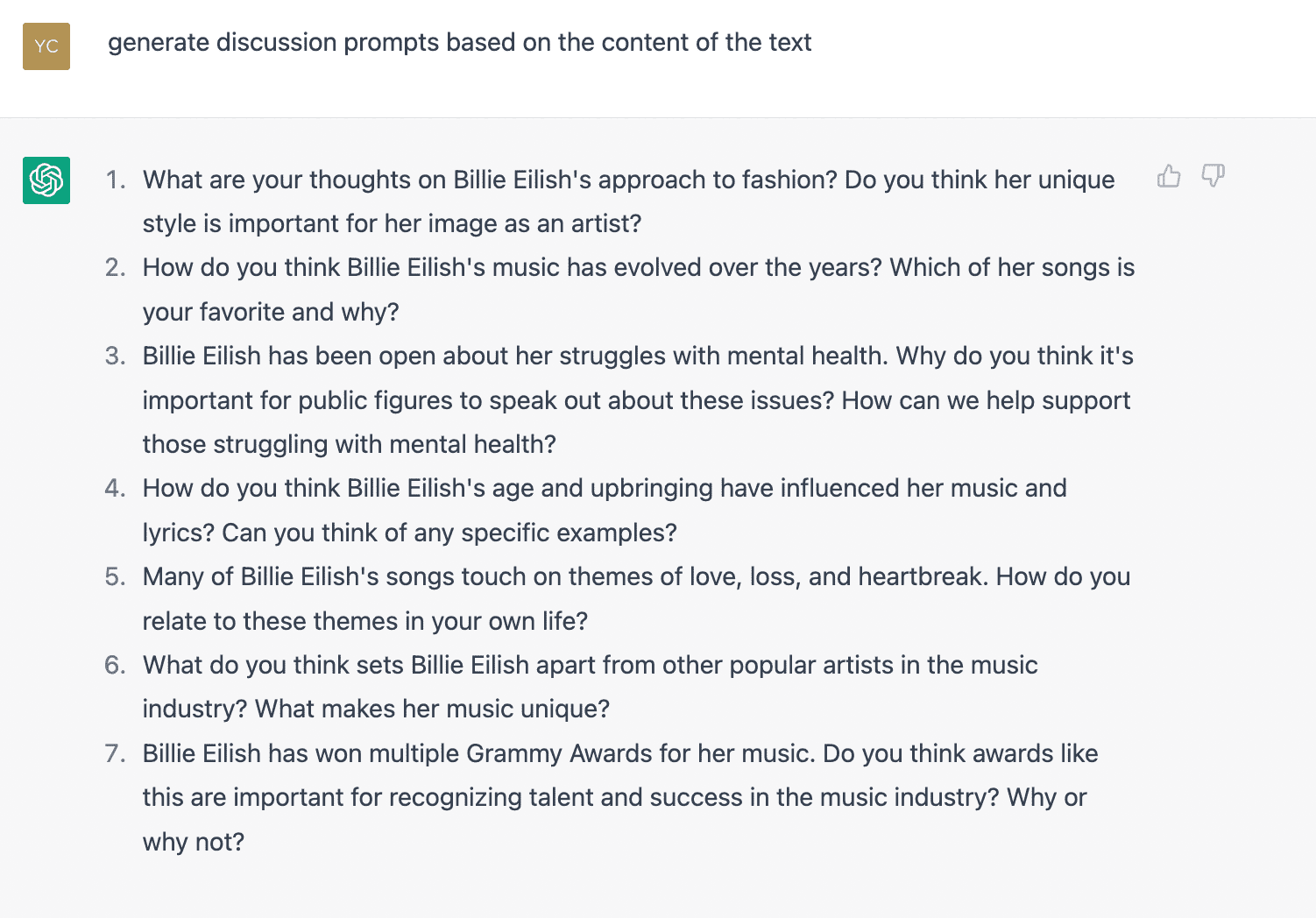
Post-reading discussion prompts generated by ChatGPT
Use GPT to generate a summary of a longer text and ask students to compare it to their own summaries. Discuss the similarities and differences, and ask students to identify the most important information in the text.
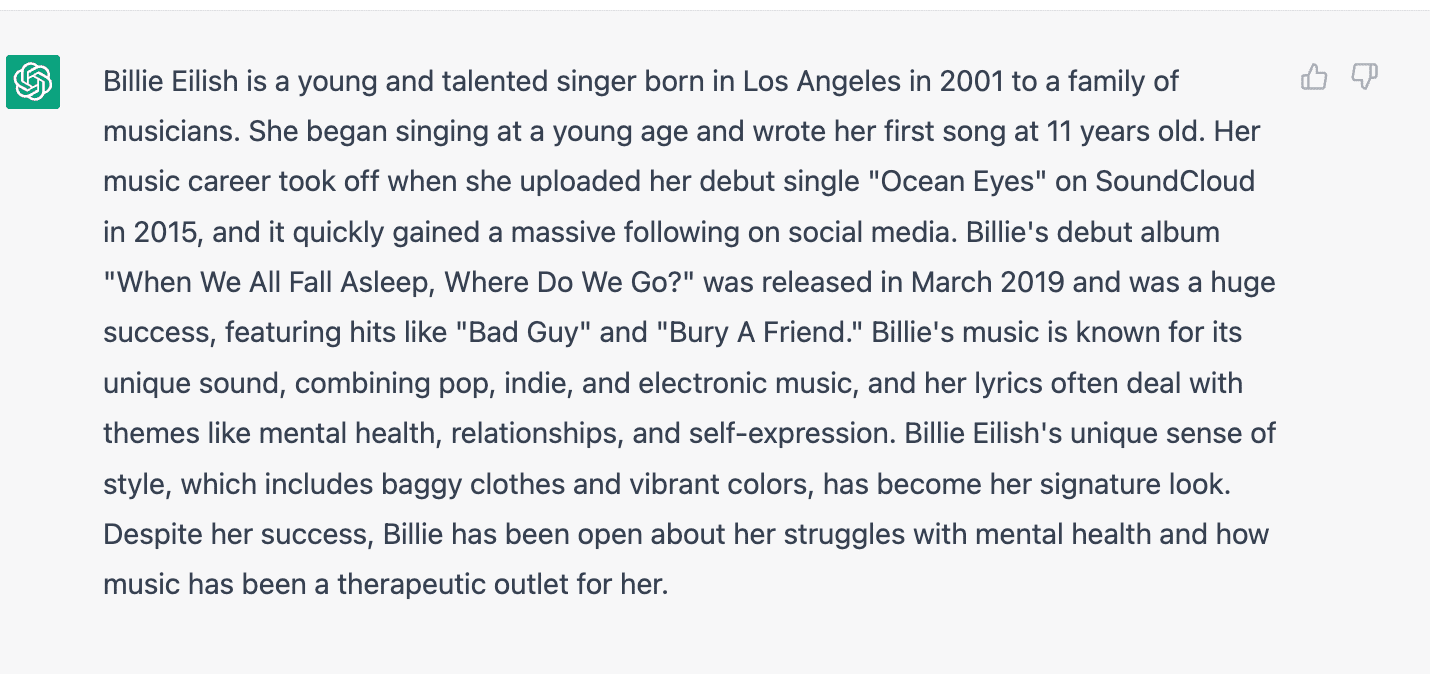
Input a text into GPT and ask it to generate a list of key vocabulary words. Have students identify the words they don't know and look up their definitions. Then, ask them to use the words in sentences of their own, for example.
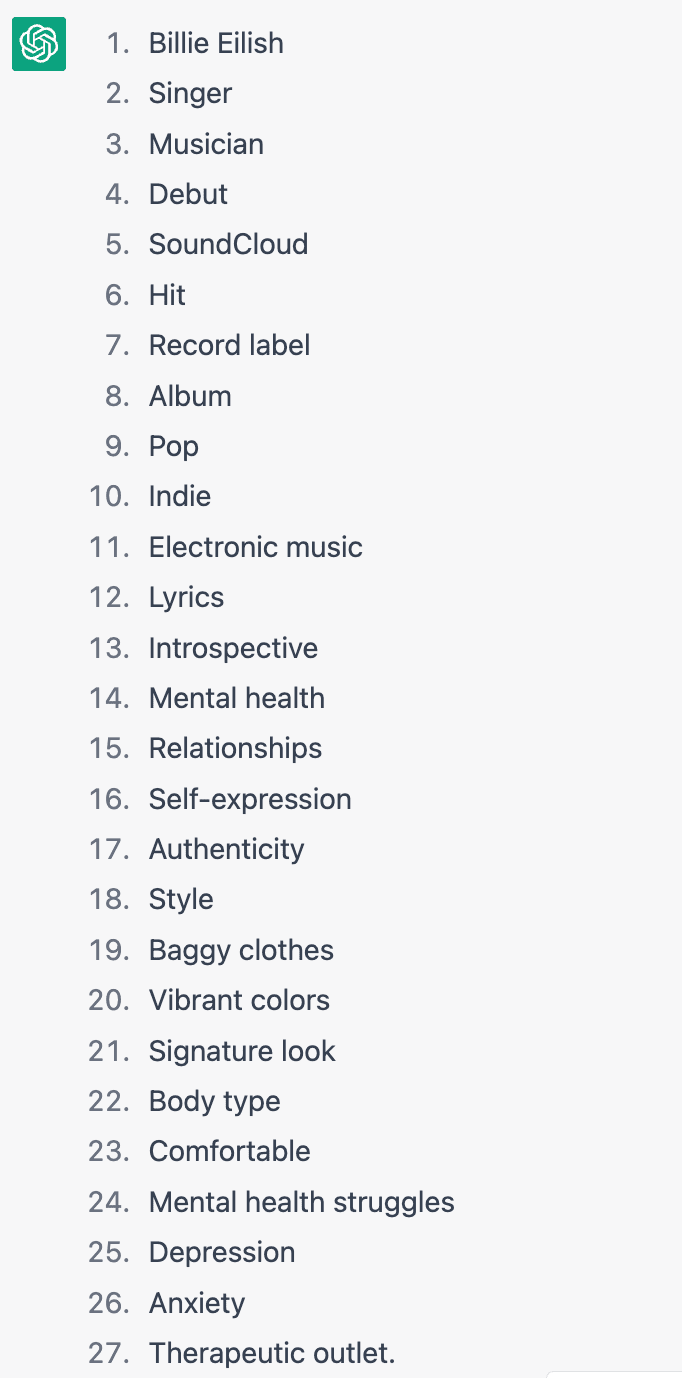
Input the first few paragraphs of a text into GPT and ask it to generate a prediction of what will happen next. Have students compare their own predictions to GPT's and discuss the similarities and differences.
I took a story written by Clive Lane 'Bad Blood', and here is what it suggested:
Input a text into GPT and ask it to generate sentences that imply something about the characters or events in the text. Have students read these sentences and infer what they can about the characters or events based on the implications.
A complete introduction to teaching English online
6-hour online course
Assign students different roles and have them act out a scenario. For example, students could pretend to be ordering food at a restaurant or complaining about the service in the hotel. You can use GPT to generate scripts or speaking prompts.
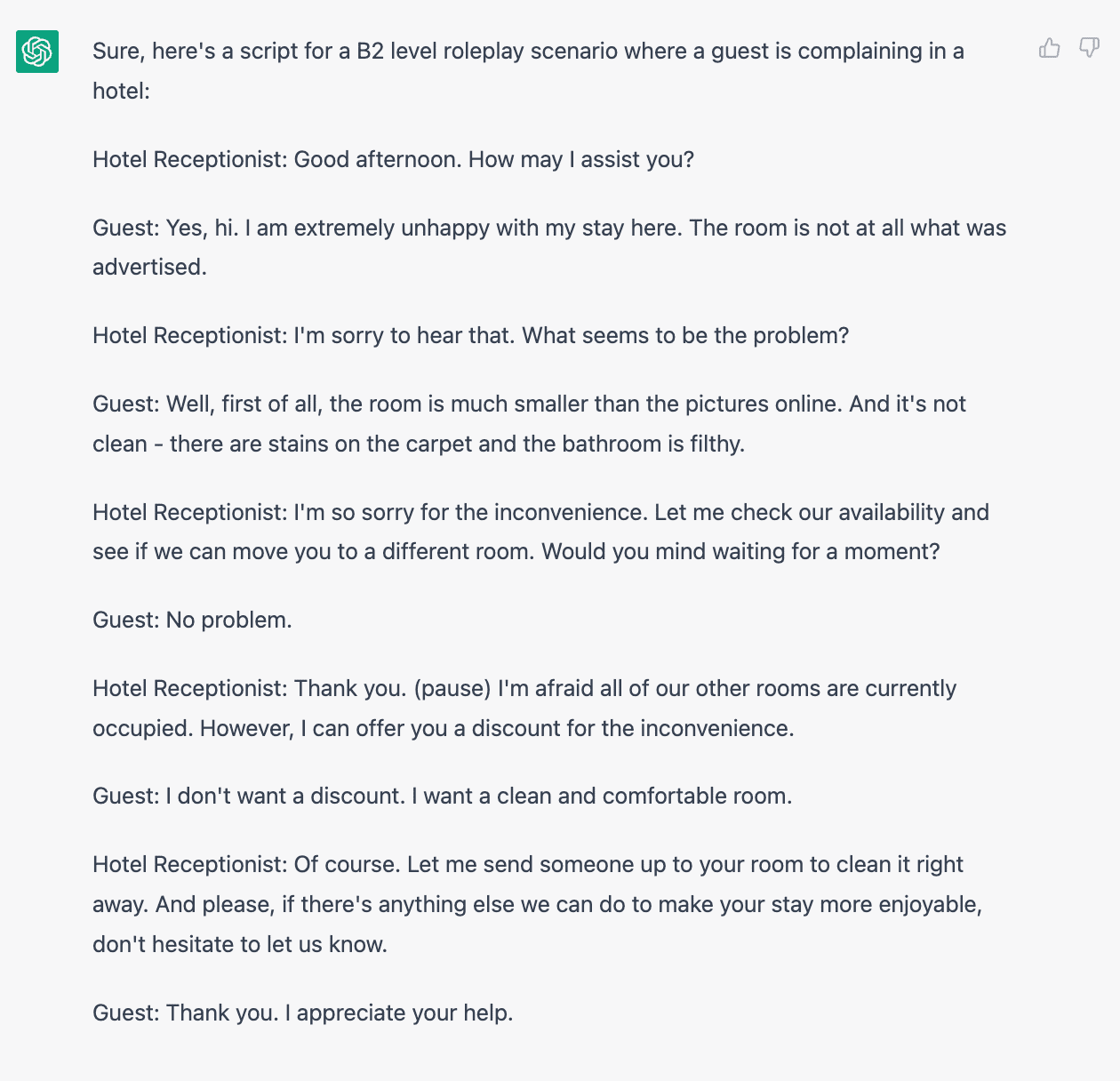
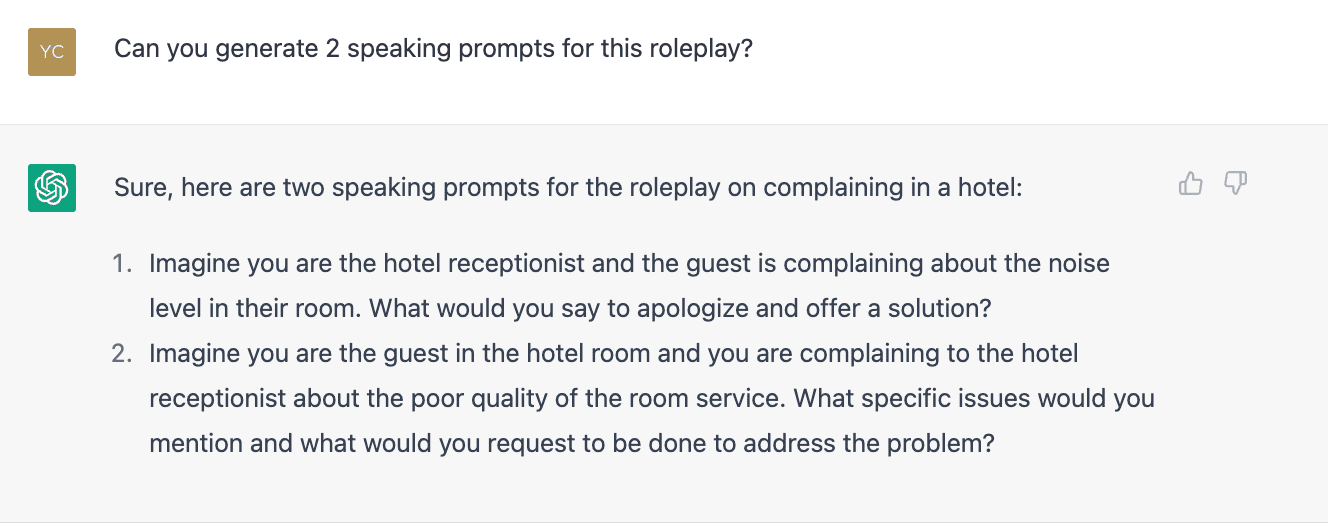
Once ChatGPT has created a conversation, you can copy-paste it to a text-to-voice software and play the conversation with a natural human sound. For example, NaturalReaders or Voicemaker.
When you play it, you can pause and repeat it for a better practice experience, especially if your students are auditory learners.
Have students practise interviewing for different jobs or for admission to a school. Use GPT to generate interview questions and to provide feedback on their answers.
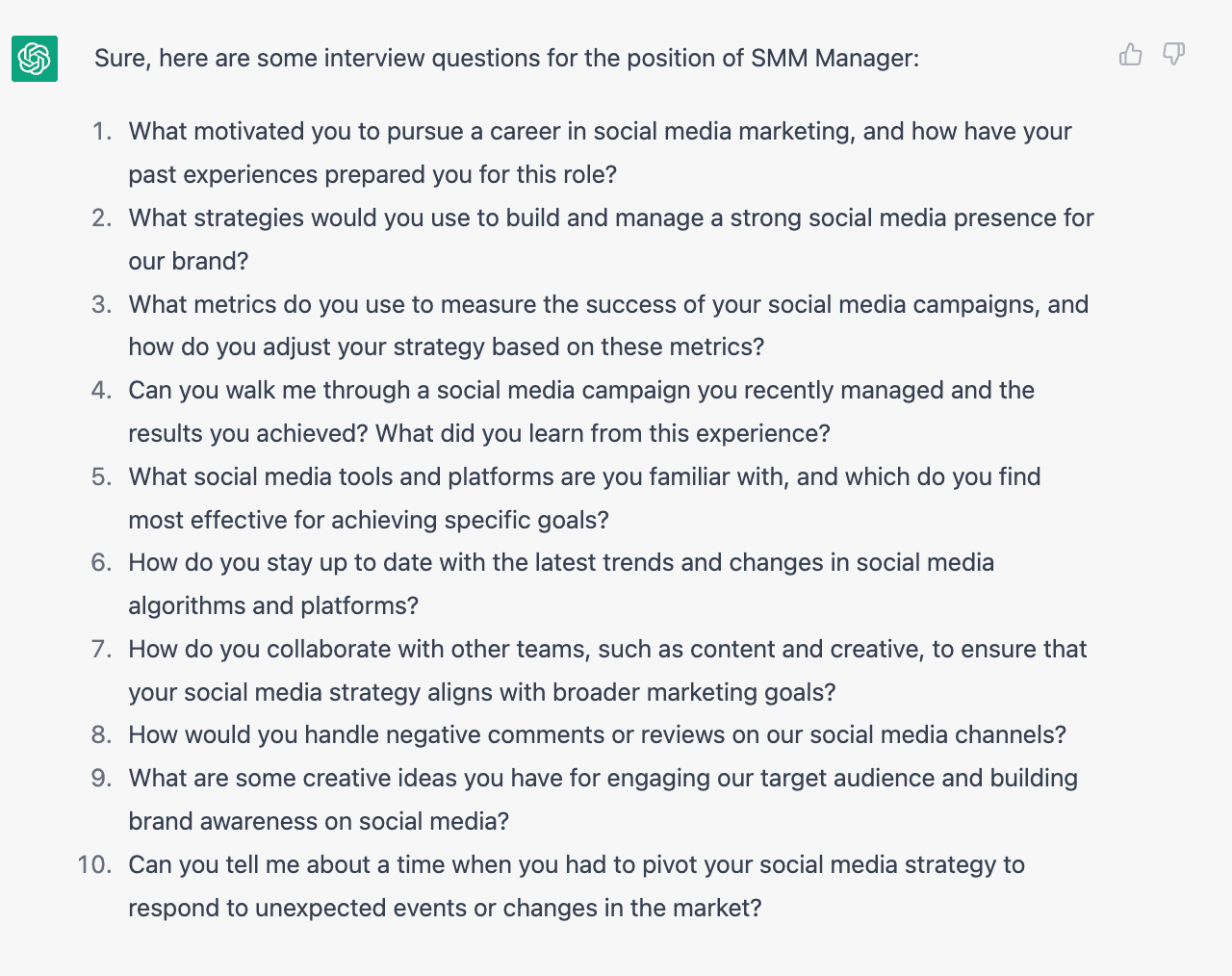
Now you know that ChatGPT can be a powerful tool for language teachers to create engaging and effective language learning activities for their students: from vocabulary and grammar practice to reading and listening comprehension. Have you already tried it? Do you think it's a helpful tool? Let us know in the comments.

Yulia Chorna
Author
Product Manager at Grade University | Experienced Educator in General, Business English & Exam Prep | ELT Conference Organiser | Speaker at TESOL & IATEFL Conferences | Passionate About Teacher Development & Educational Innovation
Comments
Leave your comment